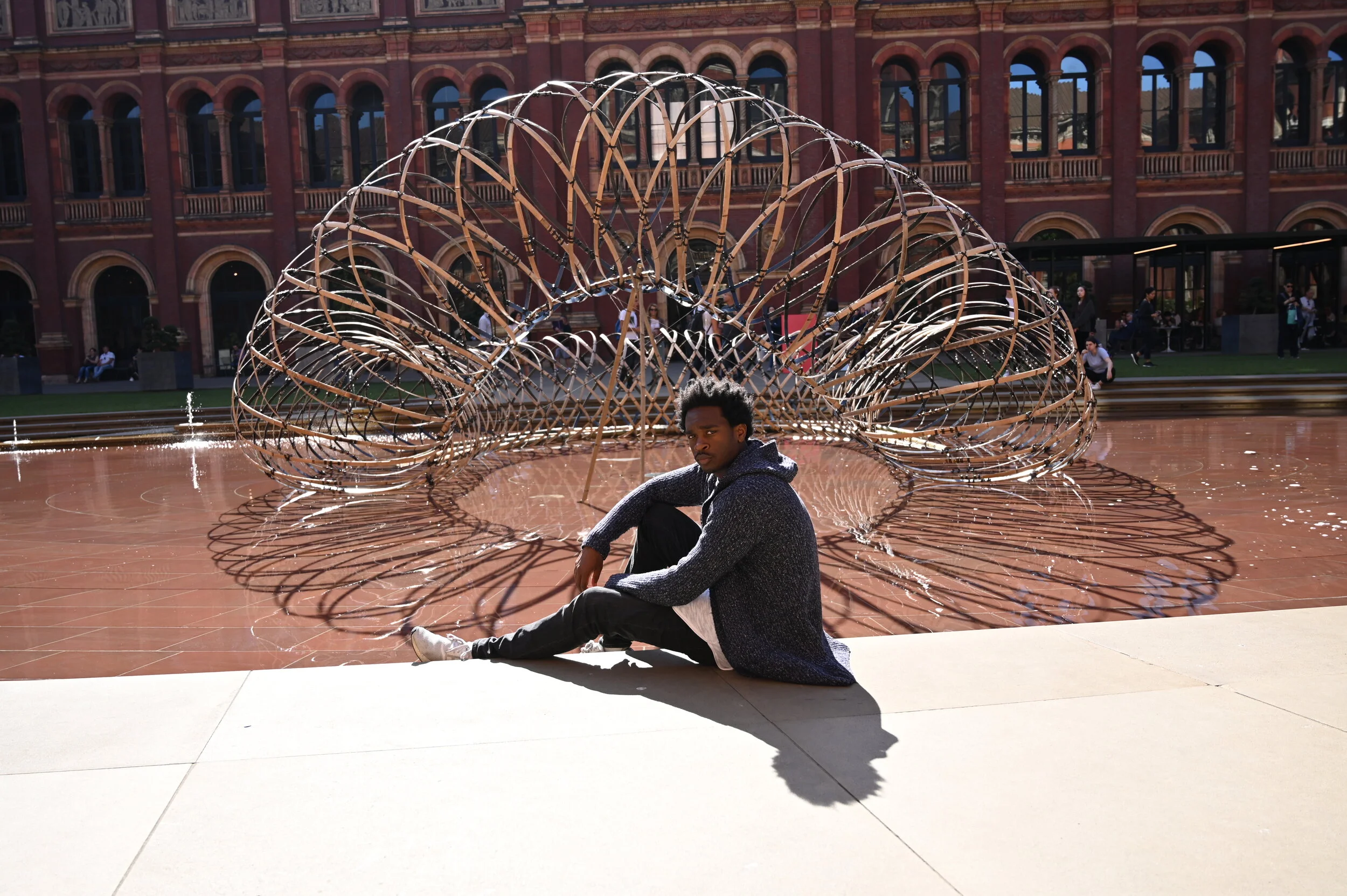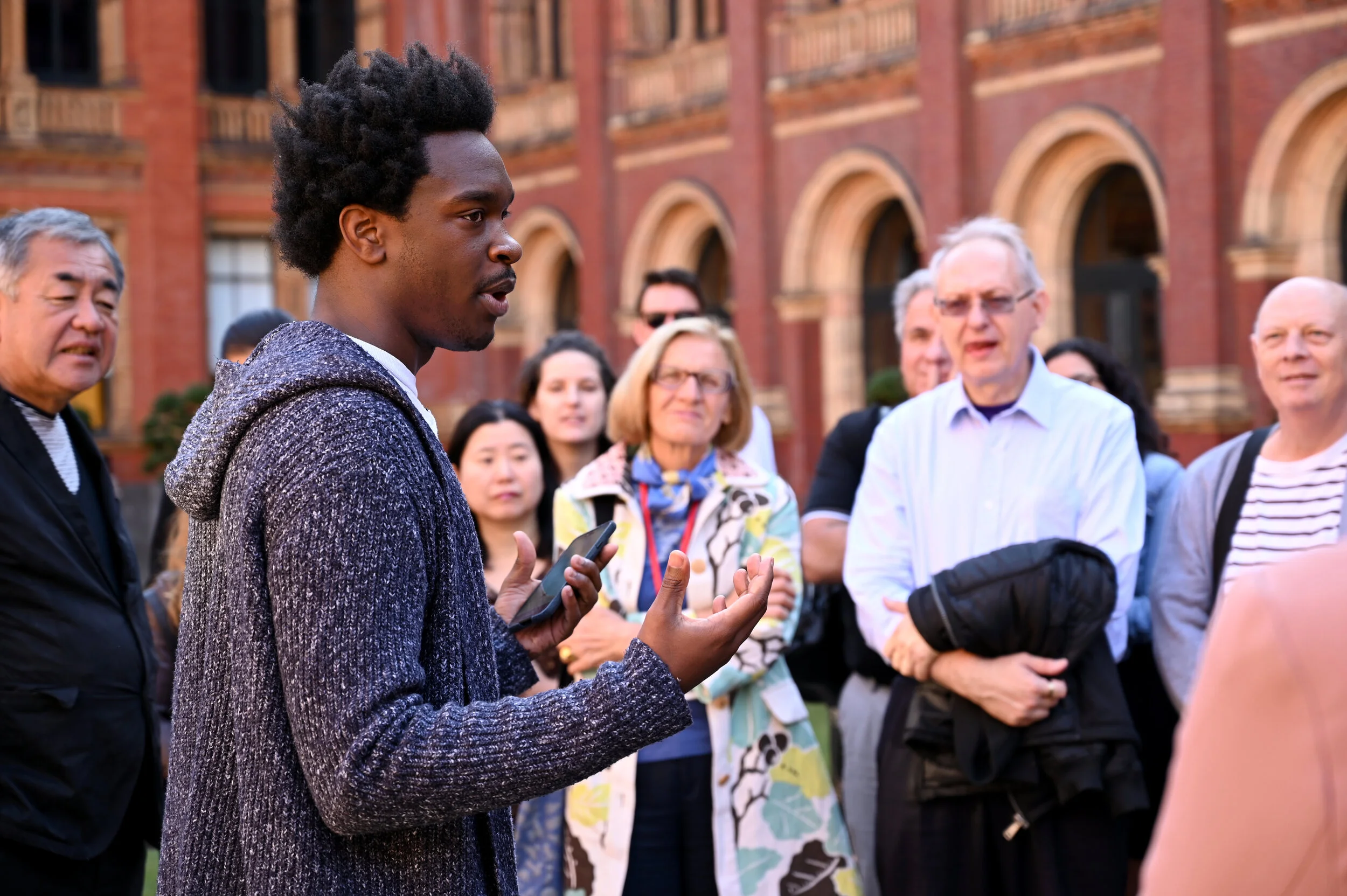Architecture and Poetry
Architecture and poetry may not seem likely bedfellows.
In normal times we tend to navigate the built environment with our heads down, performing functional tasks rather than finding inspiration in dancing golden daffodils or floating lonely clouds.
But London-based poet LionHeart sees things differently, and organisations including Grimshaw Architects and the Saatchi Gallery are some of the first to get on board with his unique approach, each making him their first-ever Poet in Residence.
His personal journey has taken him from anxiety and selective mutism as a child to studying architecture at the University of East London, which coincided with a joining the dots between his love of poetry and the emotional response (or lack thereof) created by built environment. He has an insatiable appetite to discover through communication, transforming personal discussion into beautiful prose, which has led to him writing a piece in response to Kengo Kuma’s installation at the V&A last September as well as presenting a show on BBC Radio London. I caught up with him to find out more about his unique journey and process.
JB: Your practice feels like an unfolding narrative whereby you continually challenge yourself and those who design our spaces to consider how to put feelings into them – which perhaps isn’t the most ‘traditional’ of approaches to architecture. Can you tell me a little more about this process?
L: My journey with poetry has called for emotional transformation, pertaining to my relationship with myself and others. Through various life experiences, I've seen the clear benefits of adapting through poetry revelations, which require, for me, an undeniable comfort with the seldom uncomfortable feelings and emotions we all have and orbit around. When working with practises my process is to embed and challenge their approach through their own emotional understanding that allows feelings to co-create with their architectural experience. What is the world without feelings? Not one that I want to live in, that's for sure. I can't think of an art form that didn't derive from or respond to them for the betterment of something.
JB: And architecture isn’t in the mix by chance is it – it’s what you initially studied. Is there a direct link between architecture and poetry?
L: Yes, Architecture was what I studied at University, and I wish to create poetry in the same way architects create space; with function before form, to facilitate how those who occupy that space may feel. Both sheltered and exposed. Poetry allows me to acquire more knowledge within emotional vulnerability, mental health, masculinity and architecture. That ultimately gives me better intellectual equipment at my disposal, which aids me in expanding how we think and navigate our world.
JB: You have been commissioned by, amongst others, Grimshaw Architects and the Saatchi Gallery to be the first Poet in Residency, “exploring Architecture & Poetry's relationship around emotional inhabitance, and its connection to memory and mental health.” Can you elaborate on this exploration?
L: The key is spending time with architects and finding out about them and their work. During my year long residency at Grimshaw I had numerous conversations with architects who just weren’t used to being asked about their architectural interests as well as their memories or emotional responses to the built environment. But those discussions were really fruitful, very possibly because they were about the individual rather the company or even a specific project. By taking a different approach to the conversation we made some genuine and interesting discoveries together and that gave me the inspiration to respond through poetry. What’s nice is that I then get to give that poem back to them, so it’s like closing the loop. With Saatchi it’s all about responding to the works of art on display, finding the language that can provoke a deeper understanding into mental health and how we exist emotionally without having the words to convey/articulate ourselves. Using workshops really helped to get aspiring poets involved in the process from any age, and equip them, so in some way I extended the legacy of the art pieces through poetry pertaining to mental health.
JB: Are there any consistent factors to be assessed when considering the relationship to a space and our emotional response? What role does ‘subjectivity’ play in the process of thinking?
L: Everything tends to be subjective when collating information from the residencies, and that's the most fruitful part of discovery for me; tapping into each individuals nuanced and bespoke understanding. The pointers that I lightly suggest, is to be open to the cross-pollination of art forms or practises. Most people aren't too sure how this can add value to the various elements in an organisations as well as the personal lives of their staff, however the results are surprising. I can't wait to compile everything I've learnt and explored for other practitioners, designers and architects to use and to continue to work towards changing the world through emotional cognisance within art, design, poetry and architecture.
JB: Sounds exciting! You already have a number of poems our readers can explore, but what would you say is the takeaway message from what you have learnt so far?
L: Our relationship to space and emotions is conveyed in over 120 poems I’ve produced in response to architects and other practitioners who work with the built environment; from London to New York City and Japan.
Feelings can serve our world (the built environment) as well as, if not more importantly, our inner world. Both emotion and space are intricately intertwined - we simply must be willing to push our capacity to see beyond our current comprehension.
This article was originally published by Design Insider Live.




